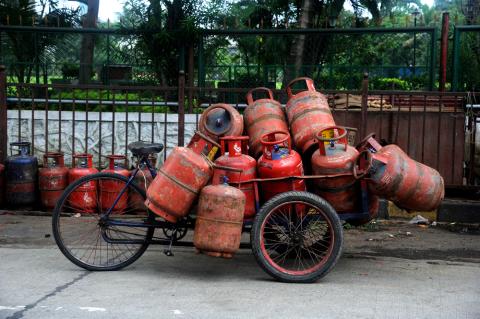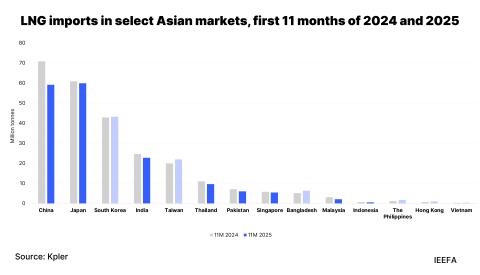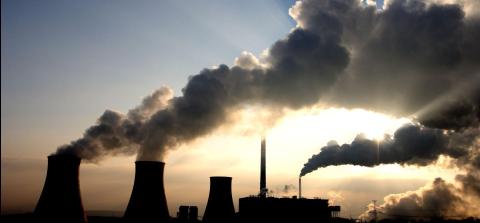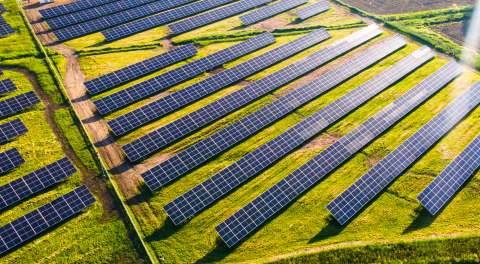More Global Momentum Toward a New Energy Economy
Technology innovation across energy efficiency, renewable energy and energy storage are driving a transformation of the world’s electricity market that will only gain momentum as the second half of this decade evolves.
The success of the climate talks in Paris has been in the formulation of Individual Nationally Determined Contributions. Pledges by the China, the U.S., and India will only accelerate the trend toward decarbonizing the world’s electricity markets.
Paris has served to highlight the inevitability of global policy action. The takeaway is that the global market for coal will continue to fade, and that the energy-transition trends that have emerged over 2014 and 2015 will continue.
Peak coal consumption, as we have documented, occurred two years ago in China, the No. 1 producer and consumer of coal. China’s consumption decline in 2014 of 2.6 percent has accelerated this year, with coal consumption down 5 to 6 percent so far this year. The global coal industry is reeling from this unexpected decline.
Any suggestion that China will reverse course ignores the significant policy momentum in Beijing toward continued electricity-sector transformation. The government revealed just last week that it aims to cut pollution from coal-fired power plants by 60 percent by 2020 through upgrades to coal-fired power plants. This news comes as Beijing reports several “red alerts” from health-endangering air pollution in the city.
Likewise, China has invested hundreds of billions of dollars building out high-voltage grid-transmission capacity that will progressively come on stream through 2018. This trend will drive increases in renewable energy capacity, further eroding coal’s presence as China commences its national emissions-trading scheme, internalizing some of the costs of coal-fired power.
The country continues to develop 20-25 gigawatts of new wind power each year and 20 gigawatts of of hydro electricity capacity. This year, China will likely set (yet again) a world record for solar installations, with 15-17 gigawatts to be commissioned.
THE U.S. IS THE SECOND-LARGEST PRODUCER AND CONSUMER OF COAL, AND IT IS IN THE THROES OF CHANGE TOO. Weekly rail shipments of U.S. coal in the December 2015 quarter to-date are down 32 percent, double the year-to-date decline of 17 percent. This accelerating rate of decline led the rail giant CSX Corp. to downgrade its 2015 earnings guidance specifically because of a broad decline in coal markets. With natural gas prices close to record lows, and record high wind and solar installation activity in the U.S. in 2015, the headwinds to coal are growing.
The third-largest producer and consumer of coal globally is India, which is showing big gains in self-sufficiency. April to November coal dispatches up 9.8 per cent year-on-year, but Energy Minister Piyush Goyal is pursuing a rapid diversification of country’s electricity-generation sector.
Record activity in the Indian renewables sector has followed the announcement of a target for 175 gigawatts of renewables by 2021, including 100 gigawatts of solar. Ten gigawatts of gigawatts of of solar tenders have been completed this year, and an additional six are under way.
This trend represents a dramatic acceleration of investment in new solar, with annual installation growth of 100-200 percent likely in 2016. The states of Jharkhand and Karnataka have each announced tenders for 1.2 gigawatts of new solar in just the past couple of week. This follows the award of a US$500 million 500-megawatt solar tender to SunEdison in Andhra Pradesh in November at a power purchase agreement tariff of Rs4.63/kWh (US7.1c). This record-low tariff is contractually set to be flat in nominal terms for 25 years, an effective real decline of a much as percent annually. India is rapidly embracing the long-term merits of deflationary renewable energy.
Minister Goyal has also set a target to reduce grid transmission losses from 25 percent to 15 percent by 2019. Should India succeed in doubling its domestic coal production and delivering a five-fold increase in renewable capacity and driving down grid transmission losses to 15 percent, the outlook for thermal coal imports into India is bleak.
We don’t downplay the importance of other nations collectively working on climate change action. But with China, the U.S. and India collectively producing and consuming close to 70 percent of the world’s coal in 2014, transformation is underpinned by these three economies.
Global financial institutions—banks, insurers and investors—are more inclined than ever to consider the financial risks best highlighted by the Bank of England’s Mark Carney in September. Moves toward divestiture by the Norwegian Sovereign Wealth Fund, Aviva, Axa, CalPERS and Allianz show that the world’s largest financial institutions are recognizing the risks of stranded assets and moving to protect their shareholders and business models. This will further accelerate the adoption of technology innovation and move capital away from high-carbon investments.
Success in Paris will only accelerate the inevitable transformation of the world’s electricity markets, further—and rapidly—undermining the role of coal.
Tim Buckley is IEEFA’s director of energy finance studies, Australasia.
















